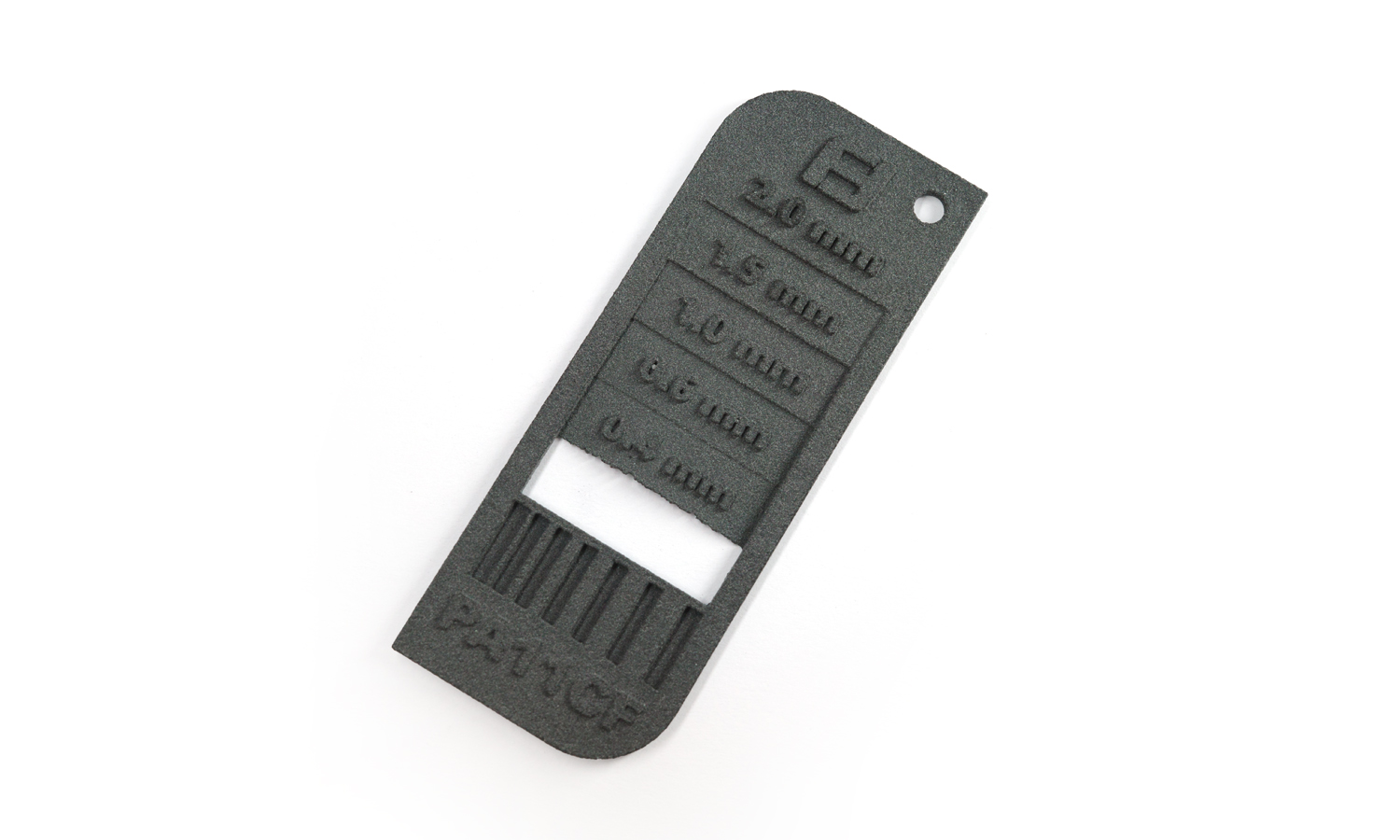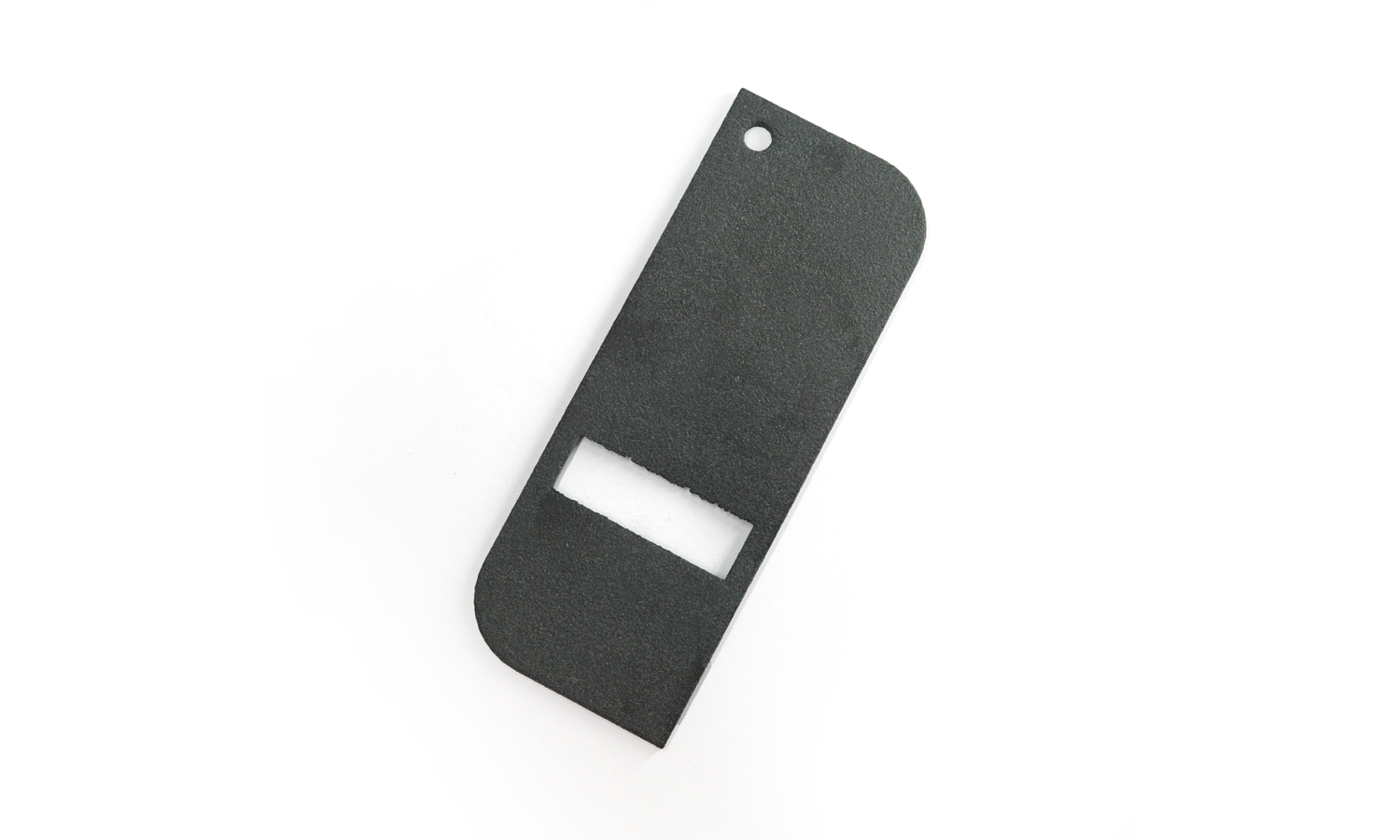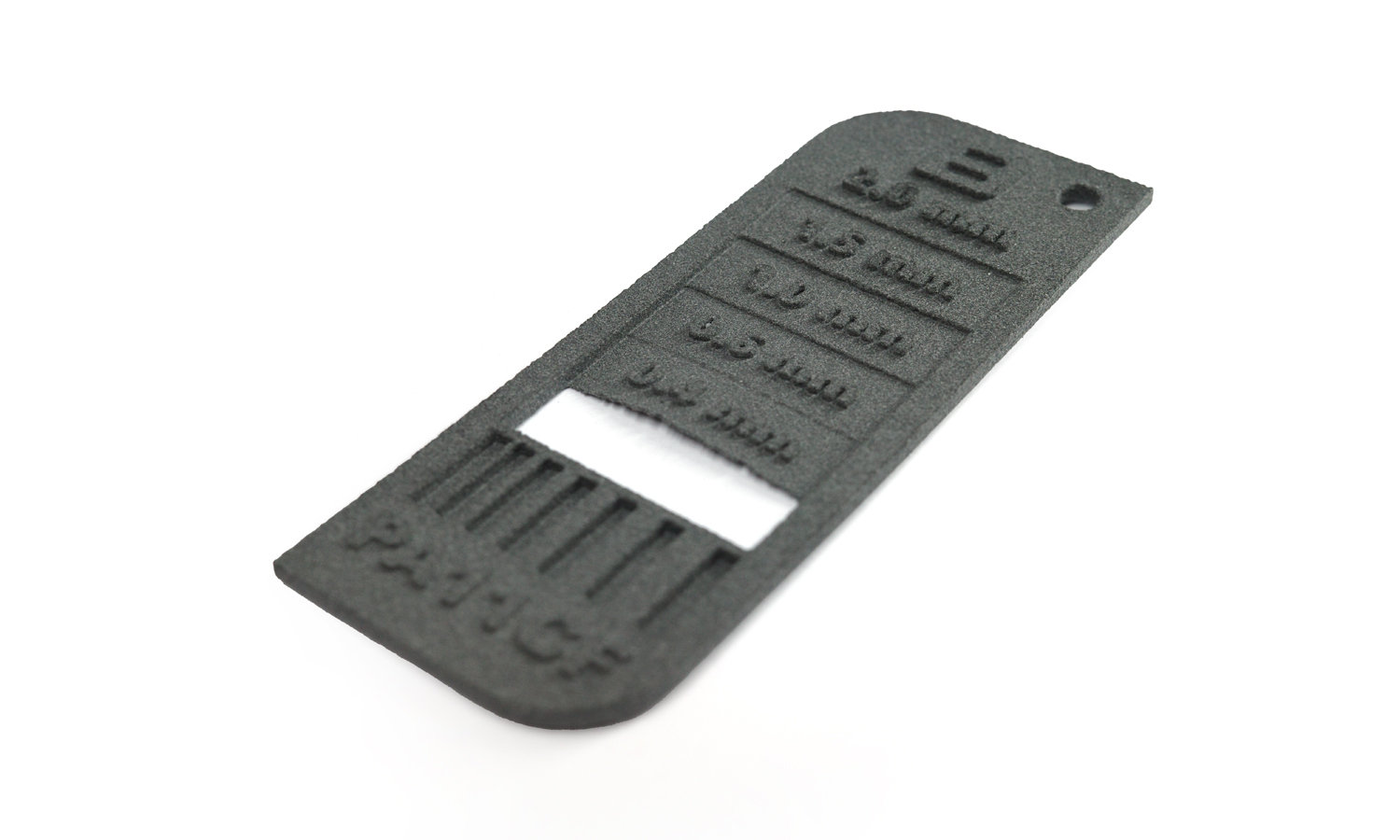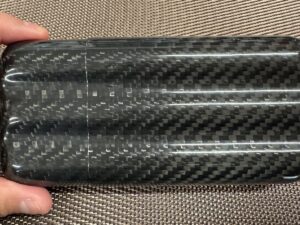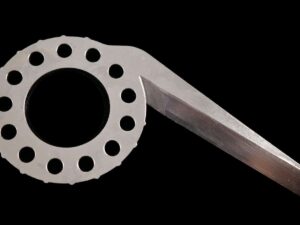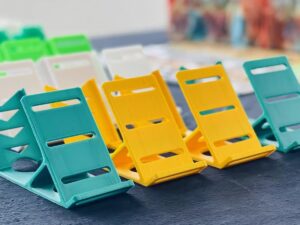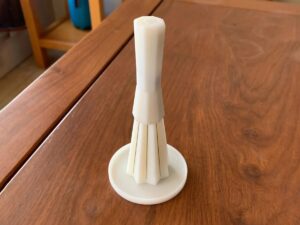- SLM 3D Printed Pure Copper with Gyroid and Perforated Structure
- SLS 3D Printed PA 11 CF Lightweight Mouse Shell
Gallery
About Project
We recently put SLS 3D printing with PA 11 CF (Carbon Fiber-filled Nylon 11) to the test with a sample strip designed to evaluate the material’s performance at varying thicknesses. The goal was to see how well this robust material could handle thin features and sharp details.
Our sample strip featured sections with decreasing thicknesses, specifically 2.0mm, 1.5mm, 1.0mm, 0.6mm, 0.4mm, and a challenging 0.2mm. Each section was clearly labeled, allowing for easy identification and comparison.
The Results:
- 2.0mm, 1.5mm, 1.0mm, and 0.6mm: These sections printed successfully with good dimensional accuracy. The PA 11 CF material showcased its strength and rigidity, maintaining its shape well.
- 0.4mm: At this thickness, we started to see some deformation. The edges were not as sharp or clear as the thicker sections, indicating that the material was beginning to struggle with maintaining detail in thinner areas. The material still held up, but the transformation was noticeable.
- 0.2mm: Unfortunately, the 0.2mm section failed to print. This confirmed our suspicion that PA 11 CF, while strong and durable, may not be the best choice for extremely fine details and very thin features.
The overall surface finish of the PA 11 CF was good, with the characteristic matte texture of SLS printed parts. However, the edges, particularly in the thinner sections, were not as crisp as we would have liked. This suggests that while PA 11 CF is excellent for structural components and functional prototypes, it may not be the ideal material for parts requiring intricate details or sharp edges.
Our test highlights the importance of understanding the limitations of materials and processes in 3D printing. PA 11 CF is a fantastic material for many applications, offering a great balance of strength, stiffness, and chemical resistance. However, for designs with very fine details or extremely thin features, it’s essential to consider alternative materials or manufacturing processes.
Looking for High-Quality Nylon 3D Printing Services?
At FacFox, we specialize in providing top-notch 3D printing services, including SLS with a wide range of nylon materials. Whether you need functional prototypes, end-use parts, or custom designs, our experienced team and advanced technology ensure exceptional results. We offer a variety of nylon options to meet your specific needs, and we can help you choose the right material for your project.
Experience the FacFox difference today. Get an instant quote and discover the possibilities of nylon 3D printing!
Solution
- Step 1: The digital 3D model of the sample strip was designed using CAD software.
- Step 2: The model was exported in a suitable file format (e.g., STL) for 3D printing.
- Step 3: The STL file was imported into the SLS machine’s software, and the build parameters were configured (e.g., layer thickness, laser power, scan speed).
- Step 4: A thin layer of PA 11 CF powder was deposited onto the build platform by the recoater blade.
- Step 5: A CO2 laser was used to selectively scan and sinter the powder according to the cross-sectional geometry of the sample strip.
- Step 6: The build platform was lowered, and a new layer of powder was deposited on top of the previous layer.
- Step 7: Steps 5 and 6 were repeated layer by layer until the entire sample strip was built.
- Step 8: The build chamber was allowed to cool down gradually.
- Step 9: The printed sample strip was carefully removed from the powder bed.
- Step 10: Excess powder was brushed away, and the part was cleaned using compressed air or other appropriate methods.
- Step 11: The sample strip was inspected for any defects or dimensional inaccuracies.
